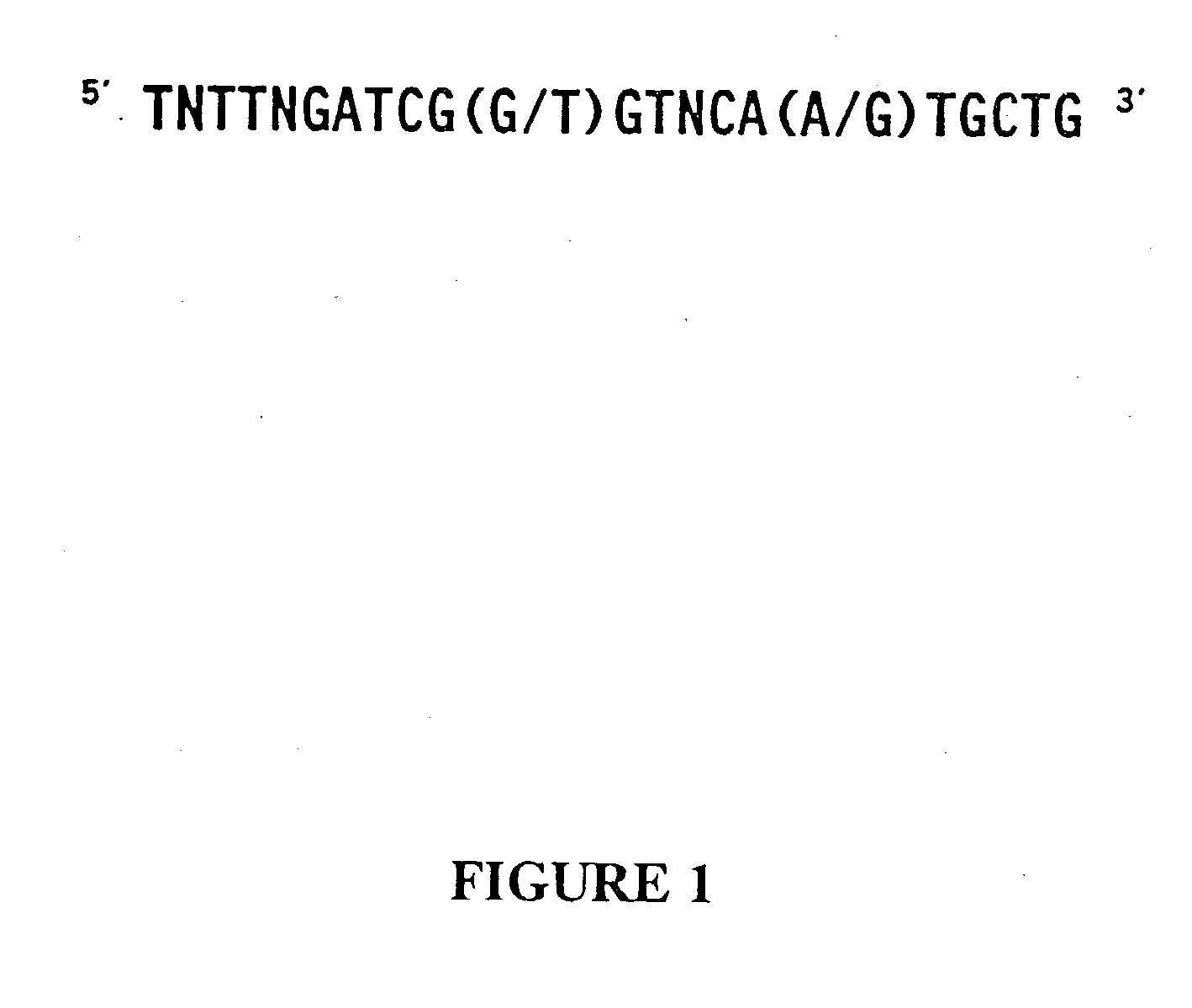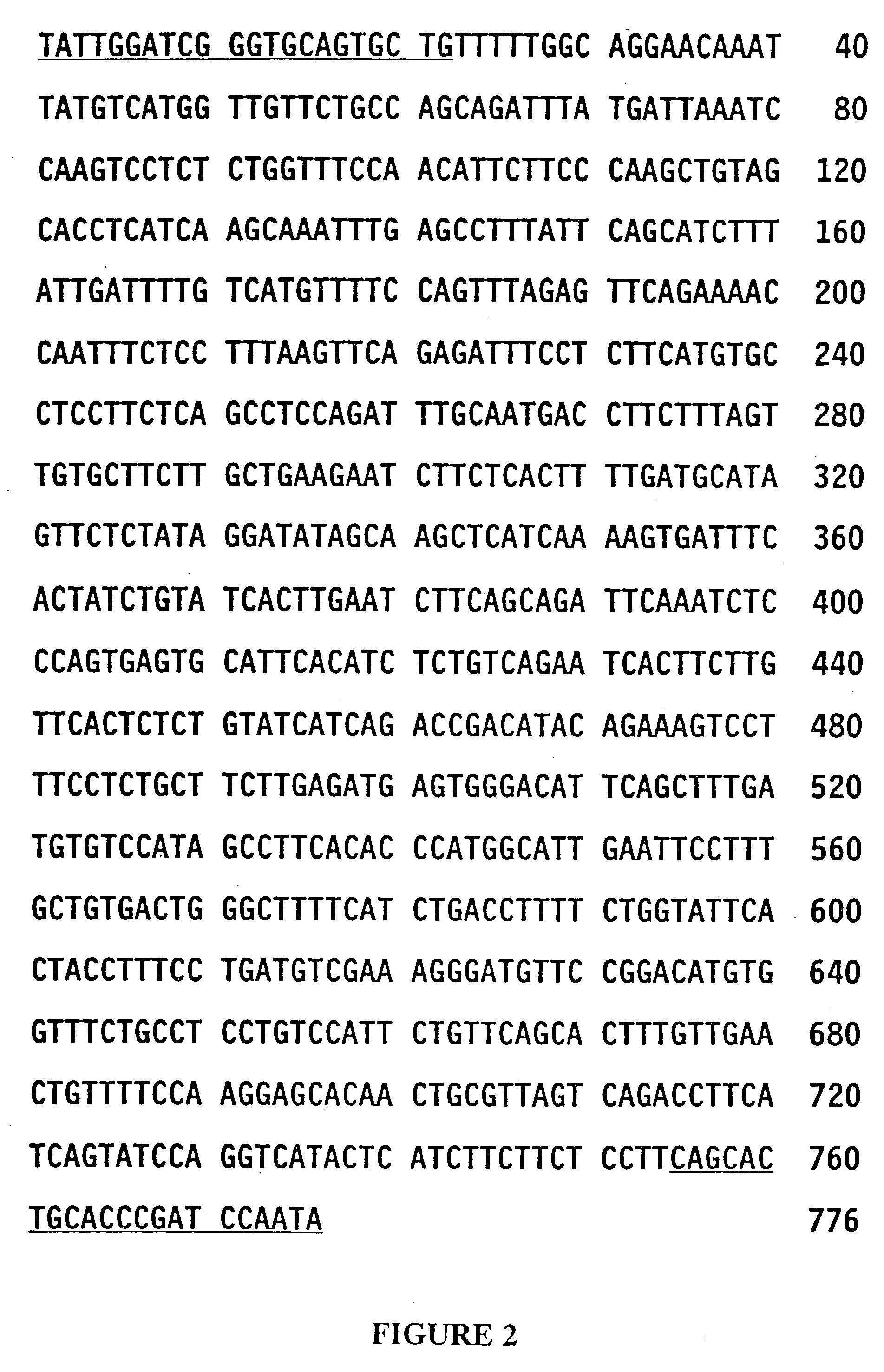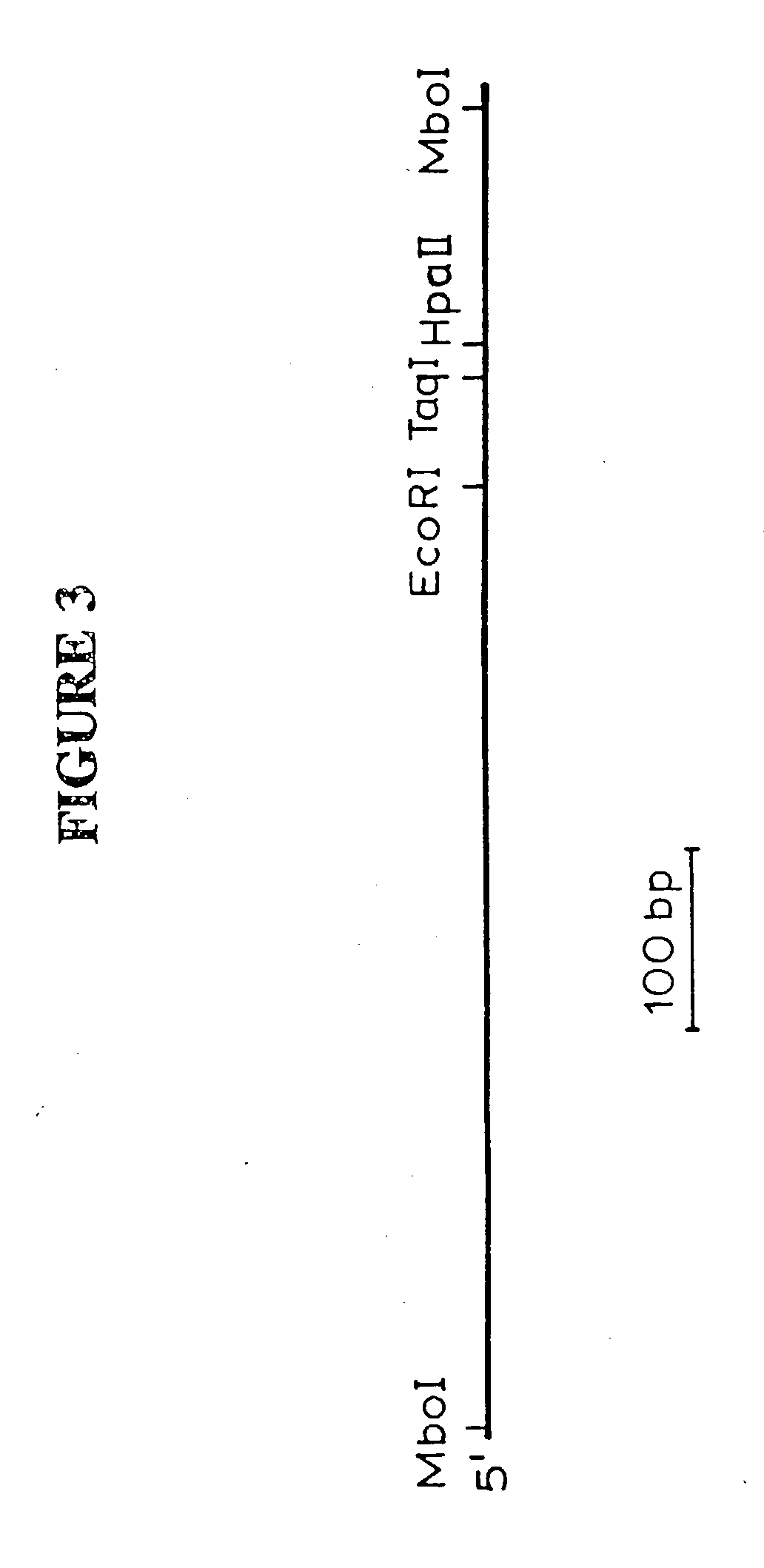Plant retroviral polynucleotides and methods for use thereof
a technology of retroviral polynucleotides and plants, which is applied in the field of plant retroviral polynucleotides, can solve the problems of retroviral integration being potentially mutagenic, inappropriate expression of that gene, and uncontrolled cell growth,
- Summary
- Abstract
- Description
- Claims
- Application Information
AI Technical Summary
Problems solved by technology
Method used
Image
Examples
example 1
[0101] Isolation and Characterization of SIRE1-1 cDNA
[0102] The initial characterization of the SIRE1-1 retroviral DNA was based on the fortuitous recovery and analysis of a 776-bp DNA fragment (Gm776) generated by the polymerase chain reaction (PCR) in an attempt to amplify soybean DNA coding for a cytokinin biosynthetic enzyme (Laten and Morris, 1993). Amplification of either total DNA (from etiolated plumules of Glycine max cv Williams, isolated by the method of Doyle and Doyle, 1990) or nuclear DNA (from G. max cv Wayne, isolated by the method of Hagen and Guilfoyle, 1985) with the single 22-nt oligonucleotide primer (FIG. 1; SEQ ID NO: 1) generated high levels of Gm776. The amount of Gm776 generated in each PCR amplification suggested that SIRE1-1 is a member of a multi-copy DNA family, and the absence of additional bands suggested that the family is relatively conserved.
[0103] Hybridization and restriction digest analyses were performed to characterize the element size of the ...
example 2
[0118] Isolation and Characterization of the SIRE1-1 Genomic Clone
[0119] Oligonucleotide primers (FIG. 5B; SEQ ID NOS: 15-24) were utilized in PCR to amplify fragments from the gag and pol regions and from part of the adjacent LTR of the 2.4 kb cDNA clone. These amplified fragments and synthetic oligonucleotides (FIG. 5) were used to generate gag- and LTR-specific radiolabeled probes. A .lambda.FIXII soybean genomic library (Stratagene, La Jolla Calif.) was probed with radiolabeled SIRE1-1 gag probes and positively-hybridizing plaques were purified by limiting dilution screening (Sambrook et al., 1989). DNA was prepared from phage recovered from liquid culture (Burmeister and Lehrach, 1996).
[0120] The phage DNAs containing the putative SIRE1 genomic clones were digested with the restriction endonuclease Not I to release the DNA inserts from the phage. The largest DNA inserts obtained thereby were digested with Xba I, and Southern blots of the digested DNAs were probed with an end-la...
example 3
[0151] Northern Hybridization Analysis of SIRE1 Transcriptional Activity
[0152] The use of the SIRE1-1 polynucleotide as a tool for genetic engineering may require the expression of sequences therefrom. It may therefore be desirable to determine growing conditions under which plants or plant cell cultures that have been infected or transduced with SIRE1-derived DNA exhibit elevated or depressed transcriptional activity. There are many examples in which the transcriptional activity of a virus is enhanced during periods in which its host experiences environmental stress. Therefore, experiments may be conducted to determine growth conditions (or conditions of stress) optimal for the regulation of SIRE1 expression.
[0153] The presence of SIRE1-specific transcripts in plants such as soybean may be evaluated by Northern hybridization (Sambrook et al., 1989). For example, several G. max cultivars, including the Asgrow Mutable line, an unstable soybean isolate (Groose & Palmer, 1987; Groose e...
PUM
| Property | Measurement | Unit |
|---|---|---|
| Electrical resistance | aaaaa | aaaaa |
| Antisense | aaaaa | aaaaa |
Abstract
Description
Claims
Application Information
 Login to View More
Login to View More - R&D
- Intellectual Property
- Life Sciences
- Materials
- Tech Scout
- Unparalleled Data Quality
- Higher Quality Content
- 60% Fewer Hallucinations
Browse by: Latest US Patents, China's latest patents, Technical Efficacy Thesaurus, Application Domain, Technology Topic, Popular Technical Reports.
© 2025 PatSnap. All rights reserved.Legal|Privacy policy|Modern Slavery Act Transparency Statement|Sitemap|About US| Contact US: help@patsnap.com



